St Mark's Crescent, Maidenhead, SL6 5BQ
Minister: Rev Dr Pete Phillips
In the event of a query, please contact: Deacon Margaret Chipandambira - T: 01628 664 740 M: 07412 336 953
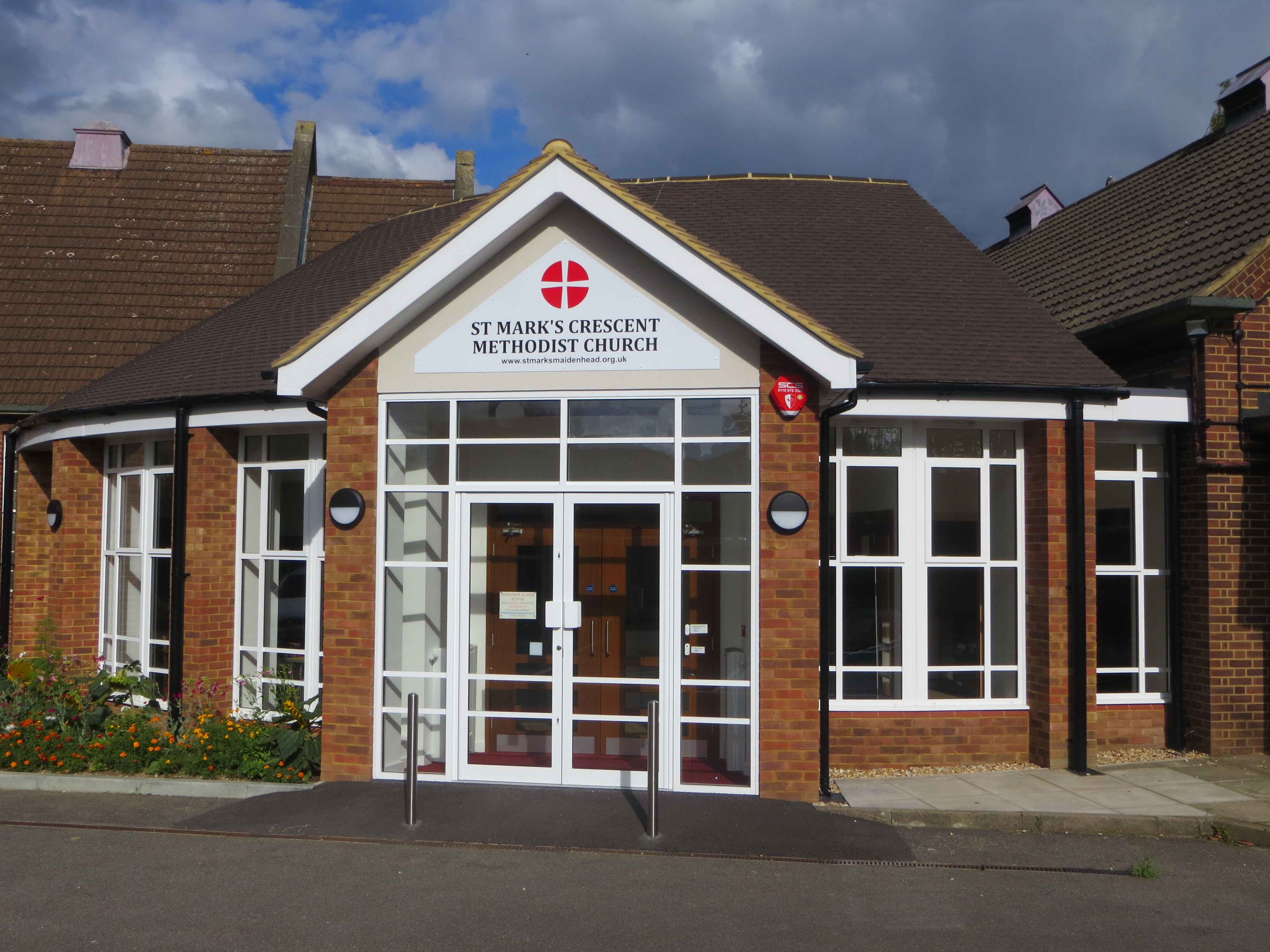
In 1914 a small interdenominational mission hall was built in St Mark's Road through the generosity of Thomas Burberry, the founder of the Burberry fashion house — one of the United Kingdom's largest branded clothing businesses. (He invented gabardine in 1879, and patented it in 1888.) The building, capable of holding over 200 people, was constructed of wood and corrugated iron. A Sunday School was started on 11th October 1920, and it expanded rapidly when a second similar building, the New Schoolroom, was added in 1921.
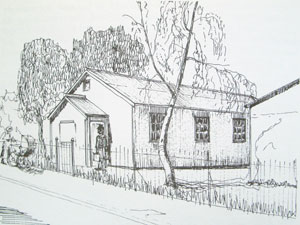
Over the years the small congregation began to find the financial burden too heavy, and they approached the Methodists, who at the Quarterly Meeting on 21st March 1934, agreed to take a lease on the premises and total responsibility for the building. The first Methodist Service there was on 15th April 1934, with the Sunday School taken over a few months later. Both the Wesleyan Methodists in High Street and the Primitive Methodists in Queen Street lent their support to ensure that the new Society became firmly established.
Also in 1934, recognising the need for a Church at the centre of a new housing development expected in the Pinkneys Green area, the Methodists raised a loan and purchased a plot of land on the corner of St Mark's Crescent and Allenby Road.
However, by 1939, as the anticipated houses had not materialised, it was decided to sell the plot. With the preceding depression and the impending war, no buyer was found. The Society reached the unenviable position of having land it did not want and could not sell, and the few members were unable to meet interest payments on the loan. The Trustees at High Street came to their rescue, taking on the responsibility for the interest charges in 1942, and generously paying off the debt in full two years later.
Interestingly, during the war years the attendance at the Sunday School reached 250, with many of the children being wartime evacuees, and in 1950, Burberry Hall had the largest Sunday School in the Windsor, Maidenhead & Slough Methodist Circuit.

After the war, and relieved of its financial burden, the Burberry Hall Society quickly established itself. Fundraising for the new Church started in earnest … but what was wanted? … It took over a year to agree the kind of building required! … and would the plans be acceptable? … the first plans were rejected by the Methodist Chapel Committee in Manchester … the second were severely criticised by the County Planning Officer … the third set … success! Approved by all the necessary authorities! Oops! However, with building materials scarce and needed for priority jobs, in June 1952, the Ministry of Works refused the application for a building licence.
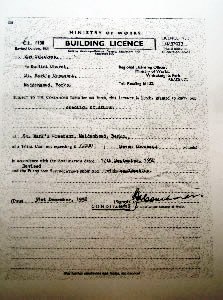
The licence was finally obtained on 3rd January 1953. Work started on 9th March 1953, and the following day the Mayor of Maidenhead, Councillor Walter Palmer, cut the first turf. The estimated cost was £9,000 of which 85% had been raised, including generous grants from the Joseph Rank Benevolent Fund and the Methodist Chapel Committee. The stone-laying ceremony took place on 16th May 1953 with the official stone laid by Rev F Bartlett Lang, Secretary to the Joseph Rank Benevolent Trust.
The Opening and Dedication of the new St Mark's Crescent Methodist Church took place on 21st November 1953 in the presence of the Mayor, Rev Dr Eric Baker (the Secretary of the Methodist Conference who preached the first sermon), and other civic, ministerial and lay representatives. 600 people arrived for the ceremony. 270 were accommodated in the Church itself and 130 in the adjacent classroom, entrance lobby or wherever space could be found! Reluctantly, 200 people had to be turned away …
It was agreed that St Mark's Crescent Church would be used only for worship and other religious events. Initially, the Burberry School Hall continued to be used for other activities (The Boys' Brigade, The Life Boys, Brownies, … ) with the intention that, once funds permitted, a Hall should be built alongside the Church. In the first year, membership rose from 35 to 69 and the Sunday School topped 200.
Negotiations for building a School Hall started in March 1954, and the plans were approved in January 1955. Finance was sought. Matters came to a head when the Burberry Hall Trustees refused to renew the lease when it expired in June 1955. Grants were obtained, and members raised the rest. Agreement was reached with the Burberry Hall Trustees allowing its continued use until the planned Methodist Hall was completed.
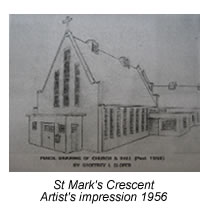
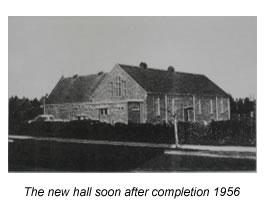
The contract to build the School Hall, at an estimated cost of £7,700, was signed in January 1956, with James Slatter (honorary Clerk of Works) cutting the first turf at the "Turning of the Turf" ceremony on 12th February. The stone-laying ceremony followed on 28th April 1956, with the official stone laid by Rev A W Hopkins BA, Principal Chaplain of the RAF. The Opening and Dedication of the School Hall took place on 3rd November — less than 10 months from the signing of the contract — with the Mayor, Alderman William E Hopgood, performing the opening ceremony. Within two years, the outstanding debt had been cleared.
Burberry Hall, no longer used by the Methodists, became a Gospel Hall.
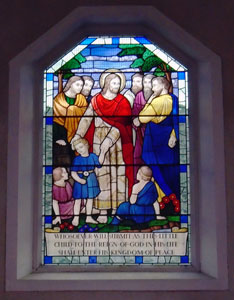
In September 1961, a stained glass window was unveiled in the chancel above the communion table. It was fabricated by Messrs G Maile of London and installed by Messrs R Harding Ltd of Cookham. It bears the inscription:
Whosoever shall submit as this little child to the reign of God
in his life shall enter His Kingdom of peace.
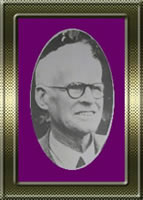
During this same service, a tribute was paid to James Slatter, who had died six weeks earlier aged 78. He was an active worker for the church all his life, a Local Preacher since 1907, and a Trustee at both High Street and St Mark's Crescent. By trade a builder and accomplished carpenter, he had been heavily involved in supervising the construction of both the Church and its Hall at St Mark's Crescent.
A surplus piece of land was sold in 1976 with the proceeds used to provide an under cover link between the Church and the Hall, a suitable common entrance, more rooms, better heating, and improved car parking facilities. The opportunity was also taken for other improvements, such as providing a common electricity supply unit instead of one per building.
The Dedication and Opening of this Extension took place on 19th May 1979, with Rev Wilfred Jones, Chairman of the District, giving the Dedication prayer.
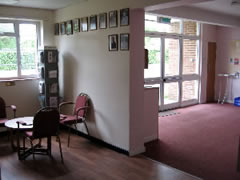
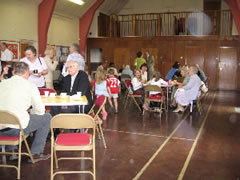
In 1990 plans were drawn up for extensive improvements to the property and grounds, including remodelling the Church interior, providing a foyer and coffee area, refurbishing the kitchen, enlarging the car park, and improving the Church PA system. Final cost: £157,750. A fund raising campaign entitled Faithlift 2000 was launched. This was so successful that work started in August 1992 and was completed by Christmas. The Chairman of the District, Rev Martin Broadbent, gave the address at the Service of Dedication and Thanksgiving on 13th March 1993.
In 1998, internal alterations and improvements were made to the Main Hall in the stage area at a cost of £35,000.
The central heating system was replaced in 2005 - 2006, thereby ensuring that a "warm" welcome is extended to all visitors!
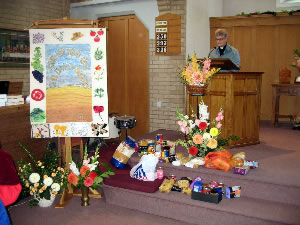
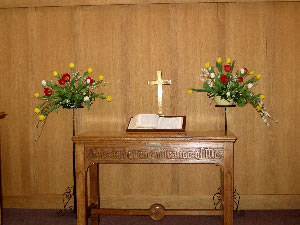
In 2012 building maintenance requirements included replacing a leaky flat roof, and modernising the kitchen and toilets. As the church's mission is to reach out to, and serve, the local community, in 2014 members initiated an exciting and challenging outreach project called 2020 Vision. The aim was to renovate and develop the church buildings further so that more groups can use the premises, and the local community benefit.
Fundraising started, an architect was appointed and planning permission was granted in 2017. Work started in April 2017 and was completed in November 2019, having included:

- Much-needed refurbishment.
- A new welcome and meeting area.
- A new room for meetings and smaller worship services.
- A new kitchen.
- New toilets.

The building work and fund-raising was seriously impacted by the Covid epidemic and lockdown restrictions in 2020-2021. However, the grand re-opening, re-dedication and celebration service finally went ahead on Saturday, 20th November 2021.
The church now has a building more fit for purpose.
The strength of a Church lies not in the Church building itself, but in its members, guided by its minister. As will be abundantly clear from this brief history, the members of St Mark's Crescent have worked tirelessly over the years, and their significant fundraising efforts have given them a Church which is welcoming and functional.
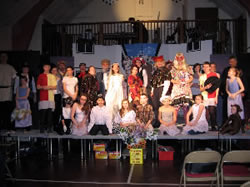
Over the years, St Mark's Crescent has continued to develop as a place of worship and fellowship for the surrounding community. The premises are in regular and continuous use by many local groups and organisations. Links with the community and fund raising for a variety of good causes continue through many activities.
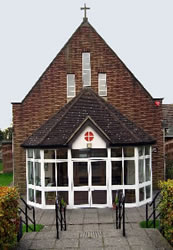
What started out as a "rescue operation" of an Interdenominational Mission, has resulted in a well-established Methodist Church which is still working to spread the Good News in its neighbourhood. The future looks bright!
To God be the Glory, Great Things He hath Done
St Mark's Crescent Methodist Church Maidenhead 1953 to 2003
from which this short history has been produced.
Methodism in Maidenhead, 1829-1979 by Peter Hardiment ISBN 0 86023 111 9